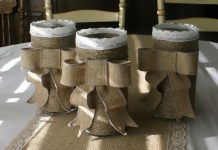If plain walls are boring and wall paper patters are too crowded looking for you, then wall stencils are the answer for you. This is a simple way to create patterns and drawings; even letterings on walls by using stencil cutouts of cardboard, metal, or other materials and color substances such as ink, paint, and so on.
 Wall stencils or window stencils can be a beautiful way to accentuate any background and to personalize not just walls but also furniture, crafts and so on.
Wall stencils or window stencils can be a beautiful way to accentuate any background and to personalize not just walls but also furniture, crafts and so on.
You can use motifs that are geometrical in pattern, or floral, other natural motif such as animals, woods or butterflies or which may even be a favorite quote, a bit of scripture, and so on. Here are some basic wall stencils tips to help you get started –
- Make sure that the surface that you want to stencil is suitable for the purpose. The surface to be used for wall stencils should be smooth, free from cracks, with flat paint rather than high gloss paint. If required, lightly sand the area to be stenciled.
- You will need basic supplies such as marking pencils, appropriate adhesive material for the stencil, ruler, brushes, paint, palette and paper towels for your DIY wall stencils project. Flat tipped or domed brushes are best for creating wall stencils. You may find these items at home or at the nearby hardware or craft store.
- When it comes to actually creating the stencil drawing, make sure that there isn’t too much paint on the brush. Dip only the bristles of the brush, so that the result is not blotchy. The pain can seep behind the stencil and mar the effect if there is too much paint on the brush. The wall stencils should have crisp and sharp edges and shouldn’t be blurry or indistinct.
- There are two basic wall stenciling methods – stippling, and swirling. The former consists of tapping or dabbing the brush into the stencil cutout openings and the latter is a use of swirling circular motions. Stippling offers a flatter result with less depth, shading your design and lending variation and texture to it. Applying less or more pressure with the brush can greatly vary the result that you get.
- One can use different items such as sponge or cotton to get different effects for your wall stencils. Also you can create variety by not filling in the entire opening of the stencil but etching only the outline or the edge of the stencil.
- One can also create wall stencils variations by adding glaze to the paint.
- Before creating the design directly on the wall that will be the actual project, it makes sense to carry out trial run on paper to see the results you are likely to get. Even after that, try out a small design on a less visible part of the walls to see what the result is likely to be when the wall stencils are actually applied to the walls.










